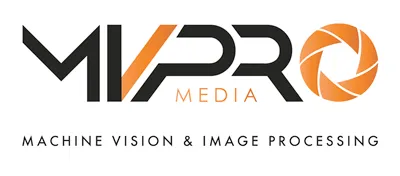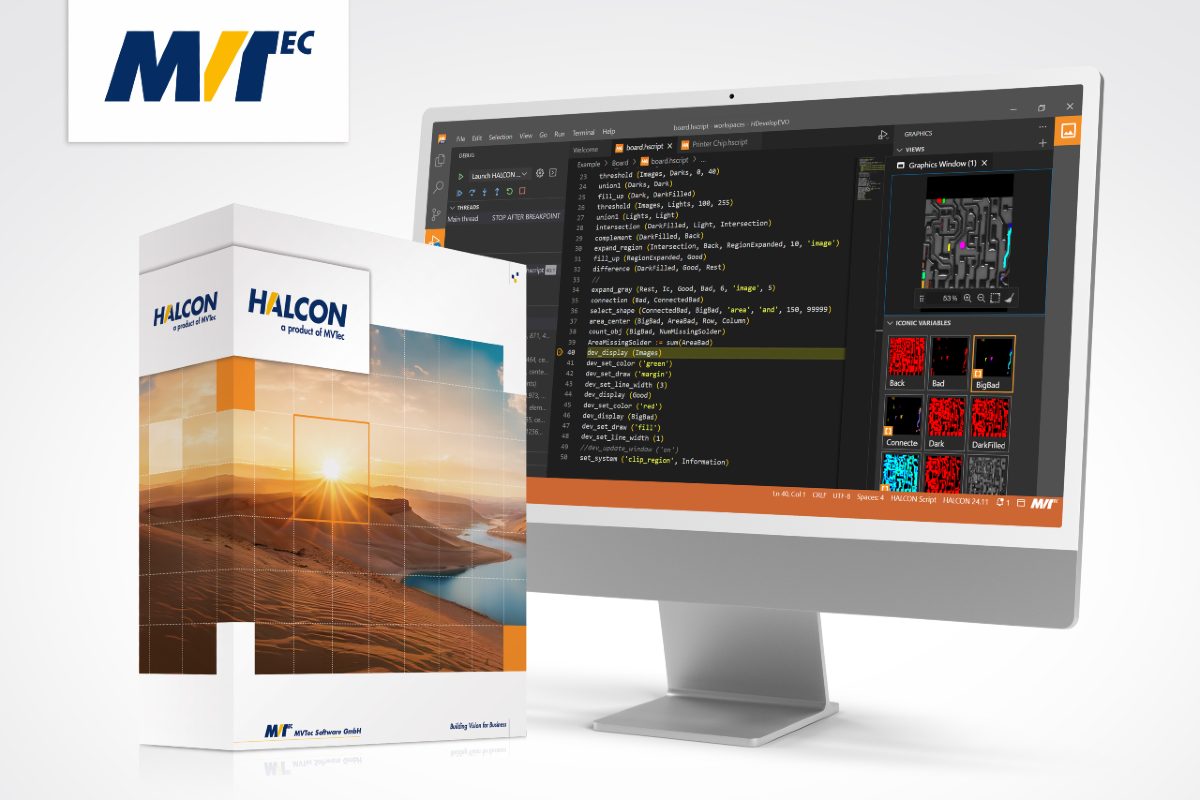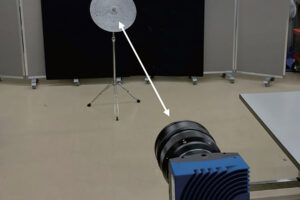MVTec Software: is launching version 24.11 of its standard machine vision software HALCON on November 20, 2024. Users can look forward to groundbreaking technologies and improvements.
“With HALCON 24.11, we are focusing on even better AI, specifically deep learning algorithms. Among other features, users can now detect and evaluate unexpected behavior in deep-learning-based classification. Many customers will also appreciate the optimized QR code reader, which is now even more powerful, particularly in challenging conditions,” explains Jan Gärtner, Product Manager for HALCON at MVTec.
The shape-based matching technology has also been made more user-friendly, making it accessible to users without advanced machine vision expertise. Furthermore, the HALCON software editions licensing model has been improved: users of the HALCON Progress Edition can now work on HALCON Steady projects without restrictions. From version 24.11 onwards, the editions are fully compatible with each other. Additionally, the new version offers developers a preview of HALCON’s new integrated development environment, HDevelopEVO.
Out of Distribution Detection (OOD) for Classification
With this new HALCON feature, unexpected behavior caused by incorrect classifications in production can be easily detected, and targeted actions, such as stopping the machine, can be efficiently initiated. When using a deep learning classifier, unknown objects are assigned to one of the classes that the system has learned. This can lead to problems if, for example, the defects or objects themselves are of a type that has never occurred before.
The new deep learning feature “Out of Distribution Detection (OOD)” notifies users when an object is classified that was not included in the training data. For instance, this could be a bottle with a green label when the system was only trained on bottles with red or yellow labels. In such cases, HALCON provides the message “Out of Distribution” along with an OOD score, indicating the degree of deviation from the trained classes.
The OOD score can also be useful when expanding deep learning models with new training images by indicating which of the new images will have the greatest value for the new model. For example, a high OOD score for a new training image indicates a greater deviation from the images already in the network, meaning higher information content and, therefore, greater value for the training.
Improved Shape-based Matching
The new HALCON version makes the “Shape-based Matching” feature, commonly used in many applications, more user-friendly. This technology is used to locate objects fast, accurately, and precisely. HALCON 24.11 introduces the new patent pending “Extended Parameter Estimation” for this purpose. This allows parameters to be estimated with greater granularity, which significantly speeds up execution in some applications. “Extended Parameter Estimation” enables this estimation also for users without in-depth machine vision expertise.
Optimized QR code reader
The performance of HALCON’s QR code reader has been significantly increased. This is particularly evident under difficult conditions, for example, when many codes need to be found in the image area or many textures in the image complicate the detection. The recognition rate has been increased and the evaluation time in demanding scenarios has been significantly reduced.
Preview of the new IDE HDevelopEVO
For all users of HALCON’s own integrated development environment (IDE) HDevelop, HALCON 24.11 offers a special highlight: a preview of the new IDE HDevelopEVO. This is characterized, among other things, by a more modern, intuitive user interface and an improved editor, the central programming element. The latter enables faster and more efficient programming and prototyping of machine vision applications. Users can already extensively test the new development environment in HALCON 24.11. The range of functions of HDevelopEVO will be continuously expanded in the coming releases and it will over time become the standard HALCON development environment.
Deep 3D Matching
With this feature, HALCON 24.11 introduces a deep-learning-based market innovation for 3D vision, especially for bin-picking and pick-and-place applications. This feature is notably robust in determining the exact position and rotation of a trained object and is characterized by very low parameterization effort and fast execution time. Depending on the accuracy requirements, one or more cost-efficient standard 2D cameras can be used to determine the position. Training is performed exclusively on synthetic data generated from a CAD model. Further training is therefore not required.
Customers can already use this feature in HALCON 24.11 – to train the model and evaluate applications, they can contact MVTec at any time. Training and evaluation within HALCON will follow in the next release.
HALCON’s GigE Vision interface supports RoCEv2
With this release, HALCON’s GigE Vision interface supports the RoCEv2 network protocol, which enables increased performance in image transmission.
Improved HALCON Progress edition
HALCON Progress is now fully compatible with the HALCON Steady edition. Progress users can now collaborate with Steady users on the same projects. Additionally, HALCON Progress users will receive the same maintenance updates as HALCON Steady users. In the future, switching from Steady to Progress will simply require exchanging the license file.
















